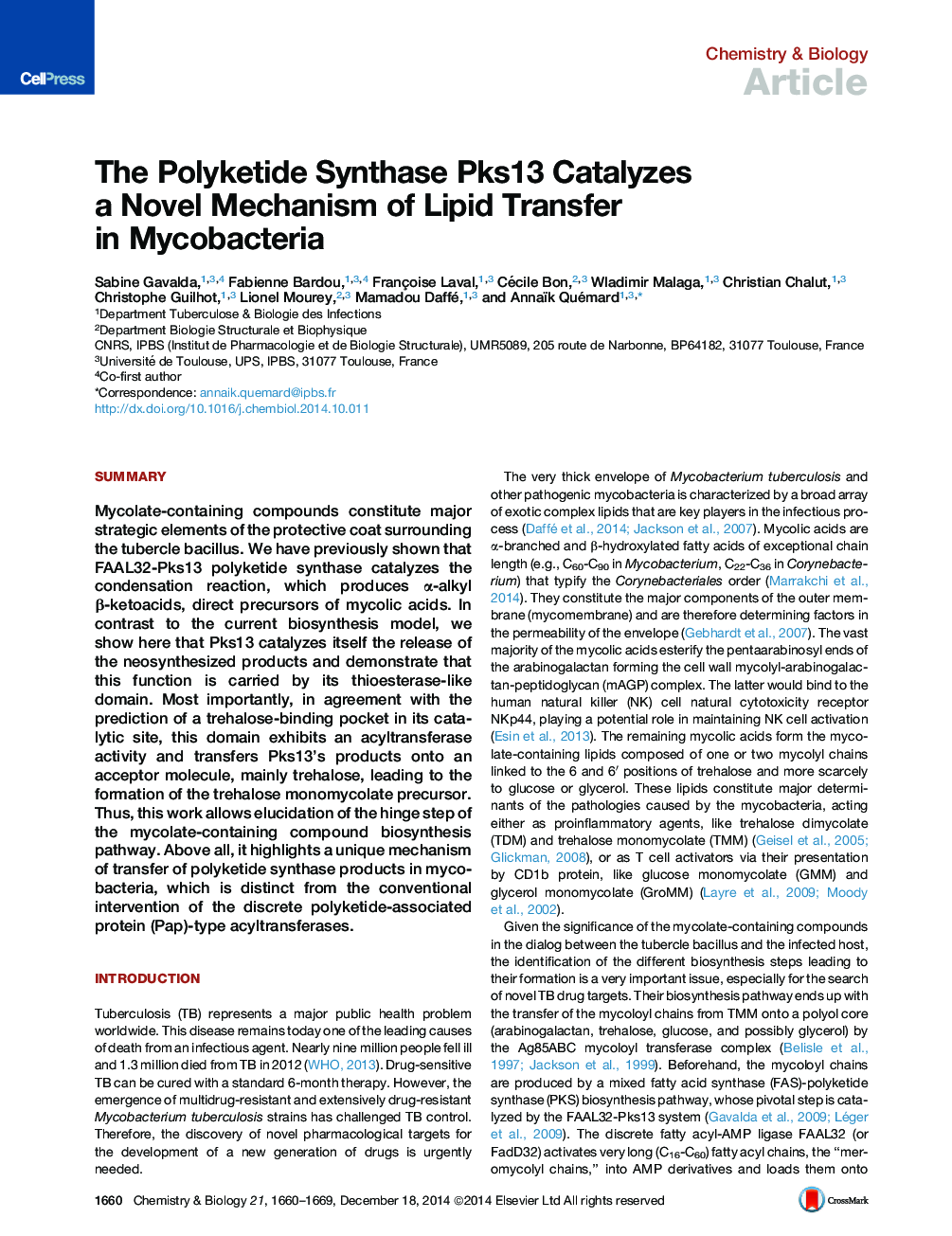| Article ID | Journal | Published Year | Pages | File Type |
|---|---|---|---|---|
| 1391543 | Chemistry & Biology | 2014 | 10 Pages |
•Pks13 enzyme directly transfers its condensation products onto trehalose•Pks13 produces the biosynthesis precursor of the mycolate-containing compounds•The acyl transfer onto trehalose is catalyzed by Pks13’s thioesterase-like domain•Pks13 catalyzes a unique mechanism of lipid transfer in mycobacteria
SummaryMycolate-containing compounds constitute major strategic elements of the protective coat surrounding the tubercle bacillus. We have previously shown that FAAL32-Pks13 polyketide synthase catalyzes the condensation reaction, which produces α-alkyl β-ketoacids, direct precursors of mycolic acids. In contrast to the current biosynthesis model, we show here that Pks13 catalyzes itself the release of the neosynthesized products and demonstrate that this function is carried by its thioesterase-like domain. Most importantly, in agreement with the prediction of a trehalose-binding pocket in its catalytic site, this domain exhibits an acyltransferase activity and transfers Pks13’s products onto an acceptor molecule, mainly trehalose, leading to the formation of the trehalose monomycolate precursor. Thus, this work allows elucidation of the hinge step of the mycolate-containing compound biosynthesis pathway. Above all, it highlights a unique mechanism of transfer of polyketide synthase products in mycobacteria, which is distinct from the conventional intervention of the discrete polyketide-associated protein (Pap)-type acyltransferases.
Graphical AbstractFigure optionsDownload full-size imageDownload high-quality image (385 K)Download as PowerPoint slide
